ANO Institute of Arts & Knowledge - Project ƐDAN (2023)
- Richard Aina
- Aug 17, 2024
- 3 min read
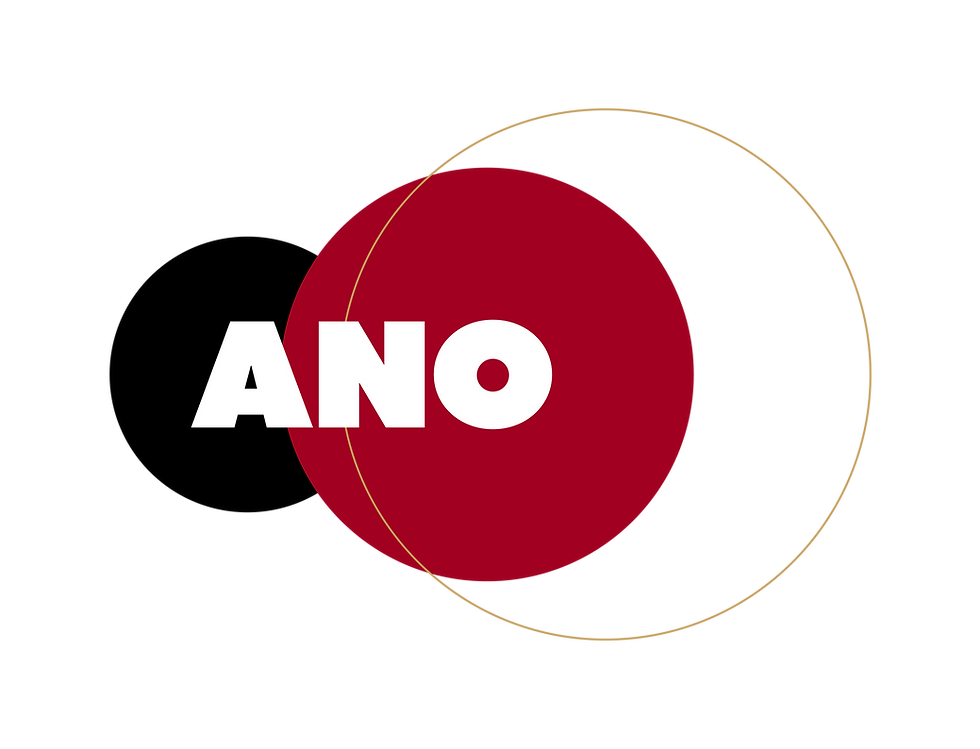
In collaboration with Nana Oforiatta Ayim, Rebecca Oluwatoyin Thompson, and Afua Nkansah-Asamoah.
OBJECTIVE
A comprehensive digital record tracing the entire life cycle of these objects, capturing as much detail as possible from their creation to their current location. This includes information on their origin, their residence in their original homes, the circumstances of their acquisition and "sale," their subsequent storage or display in a museum, and ideally, their eventual return and recontextualization.
KNOWLEDGE SHARING
The ANO research team needed to leverage the prior knowledge, expertise, and insights gained by other African teams who have undertaken similar projects to develop centralized inventories of their country’s cultural artefacts housed in global museums.
Digital Benin, Nigeria
International Inventories Programme (IIP), Kenya
Open Restitution Africa, Pan-African
Restitution of Knowledge (Pitt Rivers Museum), United Kingdom
Mahdīa Material Compilation, Sudan
STAKEHOLDERS
The historical context was thoroughly explored by identifying countries with colonial ties through primary research and literature review. A list of relevant museums was compiled, with verification to ensure they still exist, and curators were consulted for additional museum recommendations.
MUSUEM ENGAGEMENT
Museums were selected based on their collections of Ghanaian objects, with contacts gathered through researchers' networks, online research, and referrals from stakeholders involved in other digital projects.
Identify Museum Contacts for Engagement
Request inventories and photos via email
Follow-up and Track Responses
INVENTORY CATEGORIZATION
A new approach rooted in a West African context aims to use historical heritage objects as inspiration for creating contemporary architectural forms and systems that bridge the past and present. This methodology seeks to inspire futures where (West) Africa can flourish by embracing and revitalizing its traditional knowledge and practices—an approach known as afrorevivalism.
Several issues were encountered as we began compiling and attempting to coherently organise our building inventory of objects.
Limited contextual information which had been permanently lost from the point of extraction
An absence of photographic records, which encouraged confusion
A misrepresentation and underrepresentation of particular ethnic groups.
Three-Tier/Tripartite Categorization
In West African cultures, objects represent circular processes and belief systems that span generational and cosmic timescales. To develop a new form of categorization or classification, a sense of interconnectedness was necessary. This approach involved organizing the objects in a way that redefines them, using key factors such as geographical location, ethnic and linguistic groups, and time period.
The objective was to translate the density and complexity of digital inventory into a new form of discernible online content.
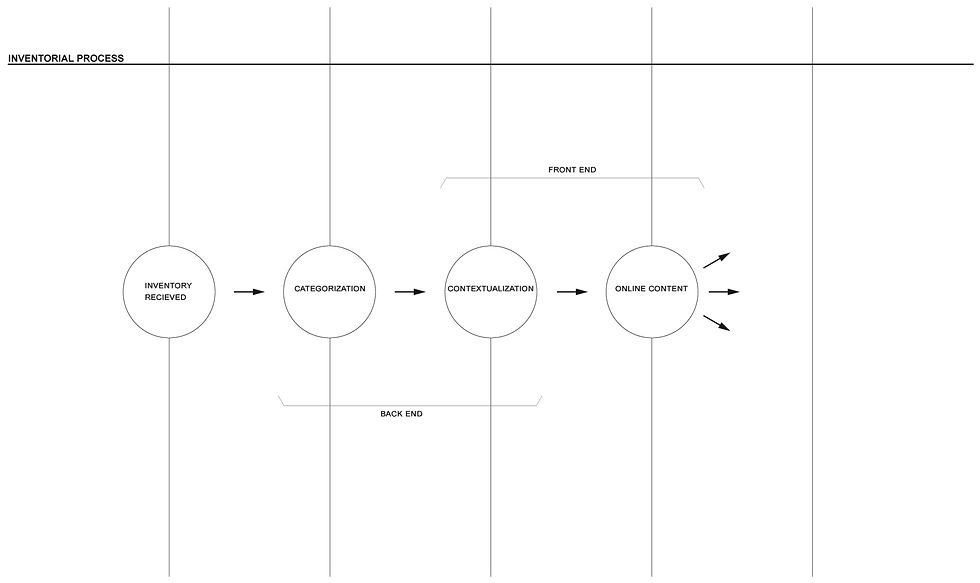
DEFINITIAL FILTERING: A sequential filter allows for a more comprehensive means of comprehension, allowing for a more nuanced and flexible understanding.
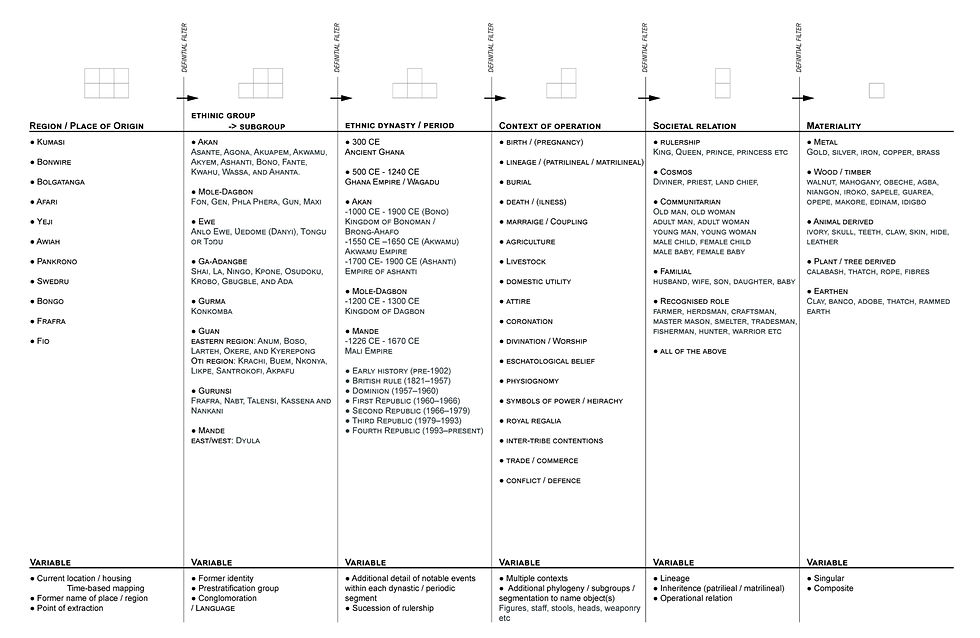
MANIFESTATION OF FUNCTION: Details how the inventory item was initially created within its original cultural and social context. Museum objects are often displayed in isolation, despite the fact that they originate from a deeply interconnected context. These objects are both the foundation of cultural practices and the outcome of traditions and processes. Understanding their origins is crucial, as it allows us to grasp the context that gave rise to their creation and use.
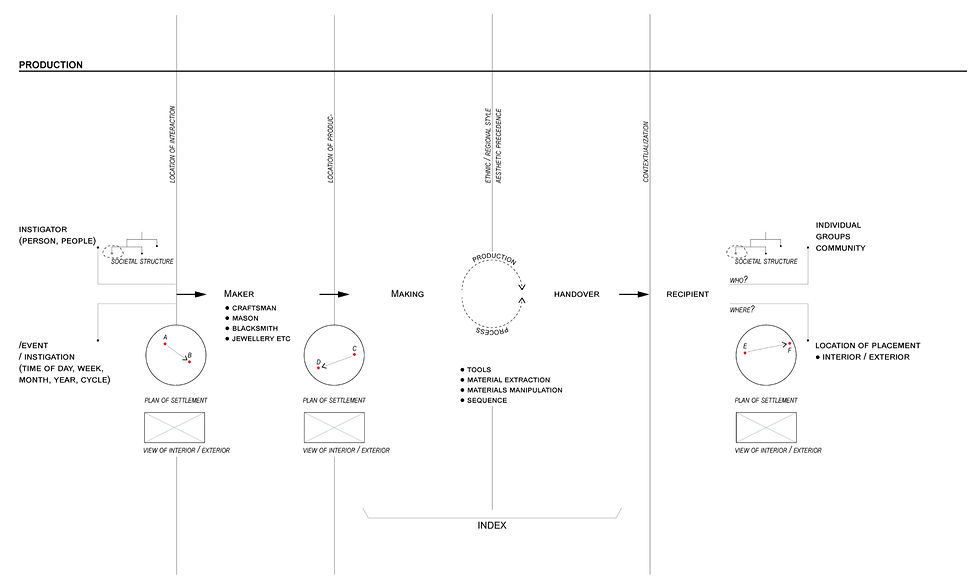
SEEN & UNSEEN INTERPLAY: How all of this connects within the physical and metaphysical framework of the community. The objects serve as a bridge between the visible—such as the body, architecture, and landscape—and the invisible, including time and the cosmos.
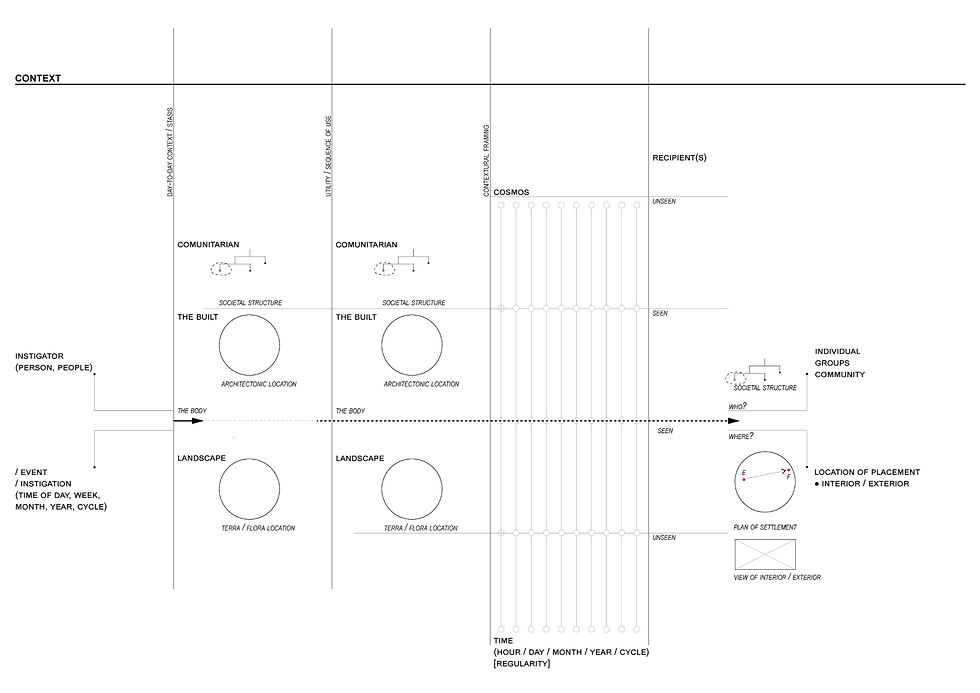
VISUAL & DIGITAL CONTENT
CONTEXTUAL FRAMING: We recognize the people, spaces, and territories that contributed to their creation, as well as the various objects used in the process—all inherently interconnected. These objects are linked to one another and to the spaces or places from which they originate. Key moments that are documented and captured within the process operate like frames and form the basis for subsequent visual content. We can understand how A relates to B, how C relates to A and so on.
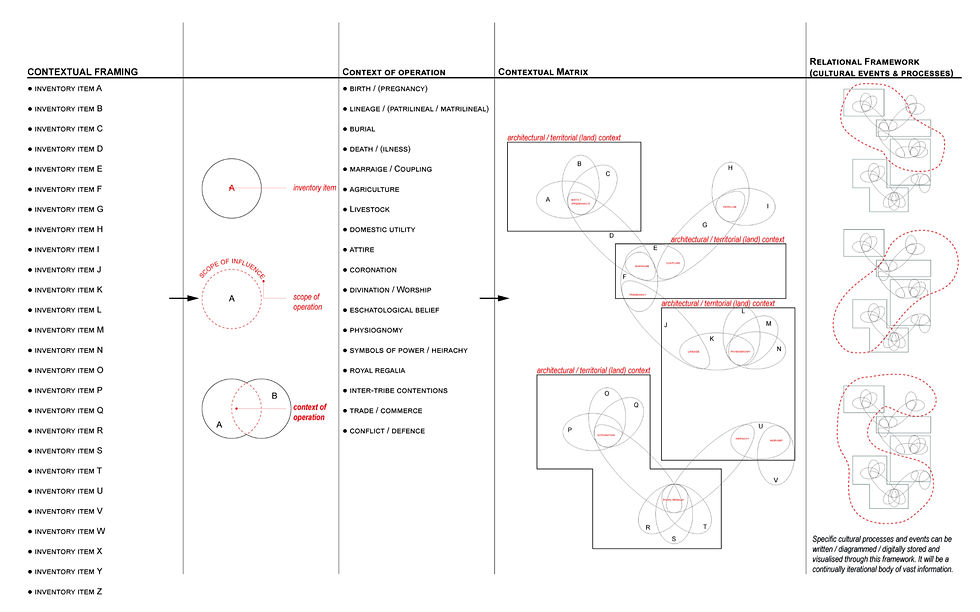
![A Culture of Craft: West Africa (UN)Objectified. [THESIS] (2021)](https://static.wixstatic.com/media/8be1a8_b55865d0151d4e66a9cacf405b3134f3~mv2.jpg/v1/fill/w_980,h_690,al_c,q_85,usm_0.66_1.00_0.01,enc_avif,quality_auto/8be1a8_b55865d0151d4e66a9cacf405b3134f3~mv2.jpg)